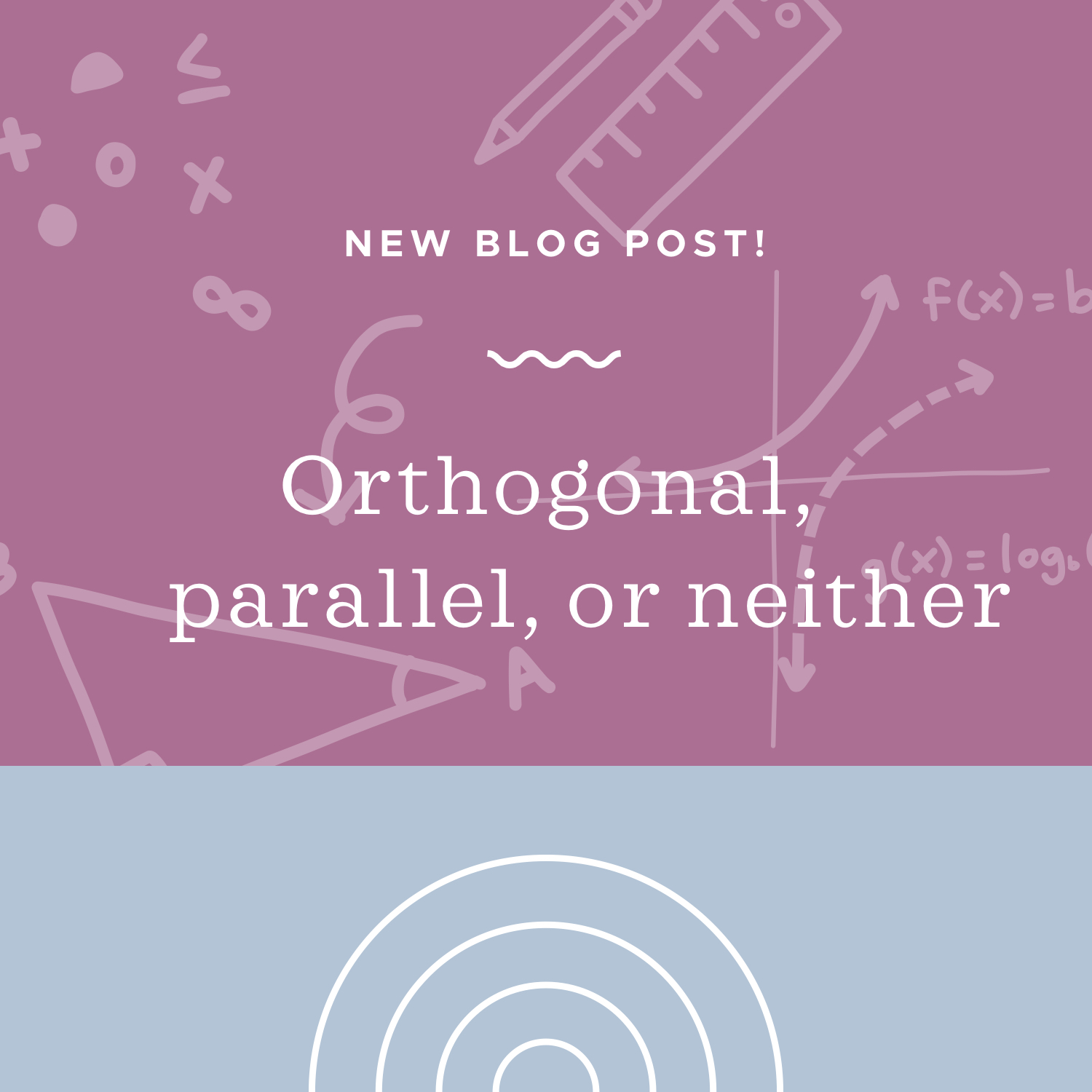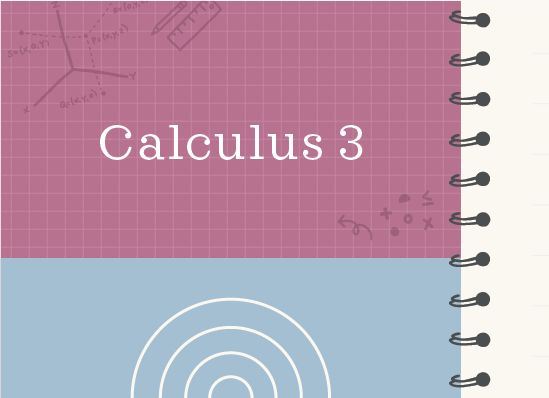Determining whether vectors are orthogonal, parallel, or neither
Defining vectors that are orthogonal, parallel, or neither
We say that two vectors ???a??? and ???b??? are
orthogonal if they are perpendicular (set at ???90^\circ??? from each other)
???a\cdot b=0???
Hi! I'm krista.
I create online courses to help you rock your math class. Read more.
parallel if they point in exactly the same or opposite directions, and never cross each other
after factoring out any common factors, the remaining direction numbers will be equal
neither
Since it’s easy to take a dot product, it’s a good idea to get in the habit of testing the vectors to see whether they’re orthogonal, and then if they’re not, testing to see whether they’re parallel.
Testing vectors to see whether they are orthogonal, parallel, or neither of those
Take the course
Want to learn more about Calculus 3? I have a step-by-step course for that. :)
Testing three vector pairs to determine whether they are orthogonal, parallel, or neither
Example
Say whether the following vectors are orthogonal, parallel or neither.
???a=\langle2,1\rangle??? and ???b=\langle-1,2\rangle???
???a=2i+3j+5k??? and ???b=i+4j-2k???
???a=\langle1,-2,3\rangle??? and ???b=\langle-2,4,-6\rangle???
For ???a=\langle2,1\rangle??? and ???b=\langle-1,2\rangle???:
We’ll take the dot product of our vectors to see whether they’re orthogonal to one another.
???a\cdot{b}=(2)(-1)+(1)(2)???
???a\cdot{b}=-2+2???
???a\cdot{b}=0???
Since the dot product is ???0???, we can say that ???a=\langle2,1\rangle??? and ???b=\langle-1,2\rangle??? are orthogonal. If we know that they’re orthogonal, then by definition they can’t be parallel, so we’re done with our testing.
For ???a=2i+3j+5k??? and ???b=i+4j-2k???:
First we’ll put the vectors in standard form.
???a=2i+3j+5k???
???a=\langle 2,3,5\rangle ???
and
???b=i+4j-2k???
???b=\langle 1,4,-2\rangle ???
Now we’ll take the dot product of our vectors to see whether they’re orthogonal to one another.
???a\cdot{b}=(2)(1)+(3)(4)+(5)(-2)???
???a\cdot{b}=2+12-10???
???a\cdot{b}=4???
Since the dot product is not ???0???, we can say that ???a=2i+3j+5k??? and ???b=i+4j-2k??? are not orthogonal.
Since it’s easy to take a dot product, it’s a good idea to get in the habit of testing the vectors to see whether they’re orthogonal, and then if they’re not, testing to see whether they’re parallel.
To say whether or not the vectors are parallel, we want to look for a common factor in the direction numbers of either vector, and pull it out until both vectors are irreducible.
???a=\langle2,3,5\rangle??? is already irreducible because ???2???, ???3??? and ???5??? have no common factors. ???b=\langle1,4,-2\rangle??? is also irreducible because ???1???, ???4??? and ???-2??? have no common factors either.
Therefore, we can say that ???a=2i+3j+5k??? and ???b=i+4j-2k??? are neither orthogonal nor parallel.
For ???a=\langle1,-2,3\rangle??? and ???b=\langle-2,4,-6\rangle???:
We’ll take the dot product of our vectors to see whether they’re orthogonal to one another.
???a\cdot{b}=(1)(-2)+(-2)(4)+(3)(-6)???
???a\cdot{b}=-2-8-18???
???a\cdot{b}=-28???
Since the dot product is not ???0???, we can say that ???a=\langle1,-2,3\rangle??? and ???b=\langle-2,4,-6\rangle??? are not orthogonal.
To say whether or not the vectors are parallel, we want to look for a common factor in the direction numbers of either vector, and pull it out until both vectors are irreducible.
???a=\langle1,-2,3\rangle??? is already irreducible because ???1???, ???-2??? and ???3??? have no common factors. On the other hand, ???b=\langle-2,4,-6\rangle??? has a common factor of ???-2??? that can be factored out of the vector.
???b=\langle-2,4,-6\rangle???
???b=-2\langle1,-2,3\rangle???
Now the direction numbers of ???a??? and ???b??? are equal, so we can say that ???a??? and ???b??? are parallel.






